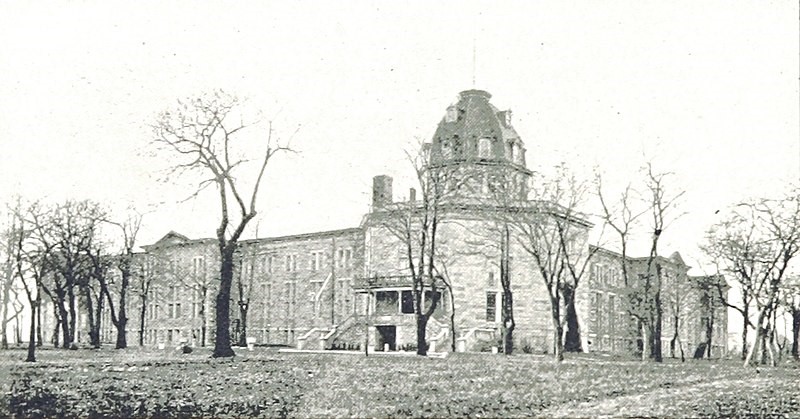Our idea of adventure today might be a road trip to a new destination, or simply getting on a terrifying roller coaster. However, what we envision never seems to include what we watch in movies, like going undercover and spying on an enemy, or traveling around the world in the least amount of days as possible. For journalist Elizabeth Cochrane Seaman, also known by her pen name Nellie Bly, these almost impossible events became realities as her career offered her these kinds of opportunities.1 Even though these assignments seem thrilling, Bly not only completed them of her own free will, but did so to help others by informing the public of various unacceptable behaviors that people were treating others to behind closed doors. There was no doubt in her mind that she would pass up an opportunity to use her gift as an exceptional reporter to liberate those being mistreated who had no voice to be heard. In one of Bly’s early assignments, she willingly allowed herself to be treated as one deemed to have a mental illness. In the 1880’s, she personally experienced the horrors that mentally ill patients went through. in order to have personal insight on the matter.
Bly was still new to journalism and in 1887 editors rarely hired women, so when Joseph Pulitzer’s New York World, a leading newspaper company at the time, offered her the opportunity to investigate an insane asylum, she did not hesitate to accept.2 Bly had so much confidence in herself that she had little doubt that she would be able to pull off the act of being insane. The asylum was located in New York on Blackwell’s Island, where it was known to be easy to get in, but nearly impossible to get out. She had read previous documents about the mistreatment of the mentally unstable and assumed they were all over dramatized; however, she knew little of what she would soon come to experience firsthand.3

Bly started this journey with seventy cents and a single promise from her editor that he would get her released after she spent ten days in the asylum on Blackwell’s Island, even if that meant exposing her identity.4 Bly first began by checking herself into a boarding house for women, and with some acting under her cover name Nellie Brown, she staged an encounter with the police. This soon led four doctors to claim she was insane, and soon after, Bly found herself riding in an ambulance on her way to Blackwell Island.
Once settled into the daily routine that doctors had for the patients at the asylum, Bly began to notice what was occurring within the facility. What happened behind the walls of this mental institution consisted of common mistreatment, such as having few heaters so everyone was freezing, forcing patients to shower in ice cold baths, and feeding them very small portions of food with repulsive tastes.5 The treatment became worse as the attendants were abusive and this misconduct was slowly integrated into part of the day-to-day procedure at the asylum, which Bly had to cooperate with.6 However, she was not alone, as she met other women in the institute that did not have any mental illnesses either, but had been checked in because of miscommunication and other various reasons.
The women Bly encountered each had their own story and explanation for how they ended up in this horrifying mental hospital. One woman specifically had no need to be there, but since she mostly spoke French, she was unable to tell the doctors her story, and because she was crying in fear of never being released, the attendants choked her. Bly recorded many cases such as this one, when women would be hurt and nobody would speak up and change it. The injures towards one of the women resulted in a black eye, and when the doctors asked about it, the nurses claimed she entered the facility with it. Many others shared with Bly the details of the abuse they encountered, including Mrs. Cotter:
Then they tied my hands and feet, and, throwing a sheet over my head, twisted it tightly around my throat, so I could not scream, and thus put me in a bathtub filled with cold water. They held me under until I gave up every hope and became senseless. At other times they took hold of my ears and beat my head on the floor and against the wall. Then they pulled out my hair by the roots, so that it will never grow in again.7

As promised, Bly’s editor got her out of the asylum ten days later, and soon after, Bly was able to share the outrage she discovered on her assignment with the world.8 Bly became that needed voice the patients in Blackwell’s Island Asylum were lacking, leading to a contribution of one million dollars per year towards caring for those with mental illnesses in New York City. This dreadful news had shocked the public and had given Bly the publicity she needed to boost her career. Yet she did not stop there. Bly continued with her passion of reporting and went undercover in places such as women’s prisons, and later traveled to the front lines during War World I.9 During Bly’s profession as a journalist she changed the views that individuals had towards the poor and helpless and how they should be treated in the hopes of having a future in which all people would be given the respect and dignity they deserve.
- Richard Ernsberger Jr., “Nellie Bly: Fearless Reporter,” American History 50, no. 2 (June 2015): 77. ↵
- MasterFILE Premier, August 2017, s.v. “Nellie Bly,” by Keira Stevenson. ↵
- Nellie Bly, Ten Days in a Mad-House (New York: Ian L. Munro, 1887), 1. ↵
- Nellie Bly, Ten Days in a Mad-House (New York: Ian L. Munro, 1887), 3. ↵
- Nellie Bly, Ten Days in a Mad-House (New York: Ian L. Munro, 1887), 13. ↵
- MasterFILE Premier, August 2017, s.v. “Nellie Bly,” by Keira Stevenson. ↵
- Nellie Bly, Ten Days in a Mad-House (New York: Ian L. Munro, 1887), 14. ↵
- Jean Marie Lutes, “Into the Madhouse with Nellie Bly: Girl Stunt Reporting in Late Nineteenth-Century America,” American Quarterly 54, no. 2 (2002): 218. ↵
- Richard Ernsberger Jr., “Nellie Bly: Fearless Reporter,” American History 50, no. 2 (June 2015): 77. ↵



77 comments
Valerie Havemann
I had never heard of Nellie Bly nor had I heard of Blackwell’s Island. It was a good article about how one woman took it upon herself to inform the public of the atrocities that women had to endure in places like that. It makes me want to go and learn more about this amazing woman and her other achievements.
Clarissa Bustamante
This article was very good and such an interesting article to read. Before reading this article I never heard of Nellie Bly nor did I know about the Blackwell’s Island. learning about who caused all the changes to mental institutions and treatment is very fascinating. It is also pretty cool how a famous journalist was written about how she was able to change the perspective people had on those with mental illness.
Morghan Armenta
What a brave young women, I cannot imagine how difficult it must of been to endure this treatment in order to jump start her journalism career. Women have had to withstand so many more barriers in proving themselves as qualified for a job and this is the extreme. Glad I now am aware of the intense investigative journalism Nellie Bly completed during her career.
Abigale Carney
Very interesting article! I have never heard of Blackwell’s Island and its story before. It is unreal that Nellie Bly was able to go visit the Island even though it was at her own will. I really liked how your story described the undercover work of Nellie Bly, and how you kept us on the edge of our seat throughout the entire article. I really enjoyed this article!
Zeresh Haman
This is a very fascinating article. I have never heard of Blackwell’s Island, however it sounds like a terrible place. How brave Nellie Bly was to be willing to be admitted into a place that she knew was full of terror. I can not even imagine what she must have been thinking. I find this story to be quite disturbing, the fact that this cruelty was going on is absolutely terrible. The fact that there were patients being beaten and pretty much tortured and the nurses and doctors were lying about it is awful. Nellie Bly is one of the many people that gave a voice to patients in mental institutions, and stories like this have helped change the way that patients are cared for.
Valeria Hernandez
The article offers the story of a famous journalist, Megan Barnett writes a wonderful and informative story about the life of a brave young woman who changed our view of individuals with mental illness. Nellie Bly was an amazing journalist who was not afraid to stand up for what she believed in. The author describes the undercover work of Bly and the impact of the aftermath discoveries she discovered in the insane asylum.
Lyra Kanin
I believe that this article takes the view on both mental institutions and revolution within the role of women and presents an article that is well thought out. I had personally never heard of Nellie Bly before reading this article, but I did know about Blackwell’s Island, and it is intriguing to learn about who caused the changes to mental institutions and treatment. Very well thought out article.